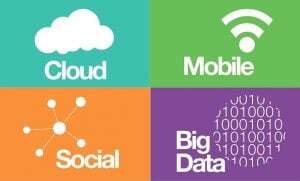By John D. Halamka, MD, MS, CIO of Beth Israel Deaconess Medical Center
I’m often asked about the most effective use of data and technology to improve patient care.
I think of this topic through the lens of continuous wellness rather than treating episodic sickness. How do we keep a patient healthy in their homes, experiencing the activities they enjoy, instead of visiting healthcare facilities when they are feeling less than perfect?
I also think of the organizing principles of today’s modern “app" ecosystem that thrives on the ideas of social networking, mobile technologies, analytics (big data), and cloud computing.

Over the past few years, IT organizations have focused on meaningful use, ICD-10, the HIPAA Omnibus Rule (privacy/security), the Affordable Care Act, and other regulatory “must do’s” from Washington.
What should we work on next?
- Social. We need to think about new strategies for team-based care. Today’s value-based purchasing requires a care traffic controller who helps guide patients across the home, inpatient, and outpatient settings. Doctors, nurses, pharmacists, social workers, case managers, home care workers, physical therapists, and mental health professionals all may be members of the team. We know from malpractice assertion data that communication among care team members is critical to achieving quality, safety, and efficiency. We need to rethink today’s siloed medical record and explore a “Wikipedia” and “Facebook” for team-based coordination of care.
- Mobile. Patient data from the home about activity, glucose levels, weight, sleep quality, pulmonary function, and blood pressure can inform protocol-driven care management programs that focus on wellness. Instead of seeing a patient in clinic every six months, we now have the technology that can use smartphones to bring telemetry continuously from patients to clinicians and teams. Several early demonstration projects have show the value of this data in reducing treatment cycle times. We can change medications, dosages, and plans weekly instead of twice a year when patients visit their clinicians for a checkup.
- Analytics. The U.S. does not have a learning healthcare system. When new ideas are developed at one hospital, it takes 20 years for innovation to diffuse widely across the country. Big data approaches enable us to share the experience of patients widely. When my wife developed Stage IIIA Breast Cancer, I was able to mine the data of thousands of breast cancer patients (de-identified) to understand treatment plans and outcomes using an open source tool called I2B2.
- Cloud. Delivering high-quality electronic health record services to small practices at low cost is challenging. Beth Israel Deaconess Medical Center, my employer, has created a private cloud which accelerated adoption of new technologies throughout our community. We’re now moving to vendor-based and public clouds. We believe this approach will reduce barriers to data sharing, enable us to bring new capabilities to clinicians monthly not every few years during upgrade cycles, and support our increasingly complex security requirements. Amazon Web Services will sign a Business Associate Agreement with providers to support customers against privacy breaches, in the interest of HIPAA compliance. The time for secure cloud hosting to increase agility, enhance usability, and reduce cost has arrived.
There will always be new technologies – Google Glass, Apple Watch, and new consumer wearable healthcare devices. Rather than focus on a single technology, I prefer to focus on principles.
If we can accelerate the use of social networking ideas, embrace mobile, create a learning healthcare system with big data analytics, and leverage the cloud, healthcare will see real improvements in patient outcomes.
John D. Halamka

John D. Halamka, MD, MS, is Chief Information Officer of Beth Israel Deaconess Medical Center, Chairman of the New England Healthcare Exchange Network (NEHEN), Co-Chair of the HIT Standards Committee, a full Professor at Harvard Medical School, and a practicing Emergency Physician. He writes the popular "Life as a Healthcare CIO" blog.






























